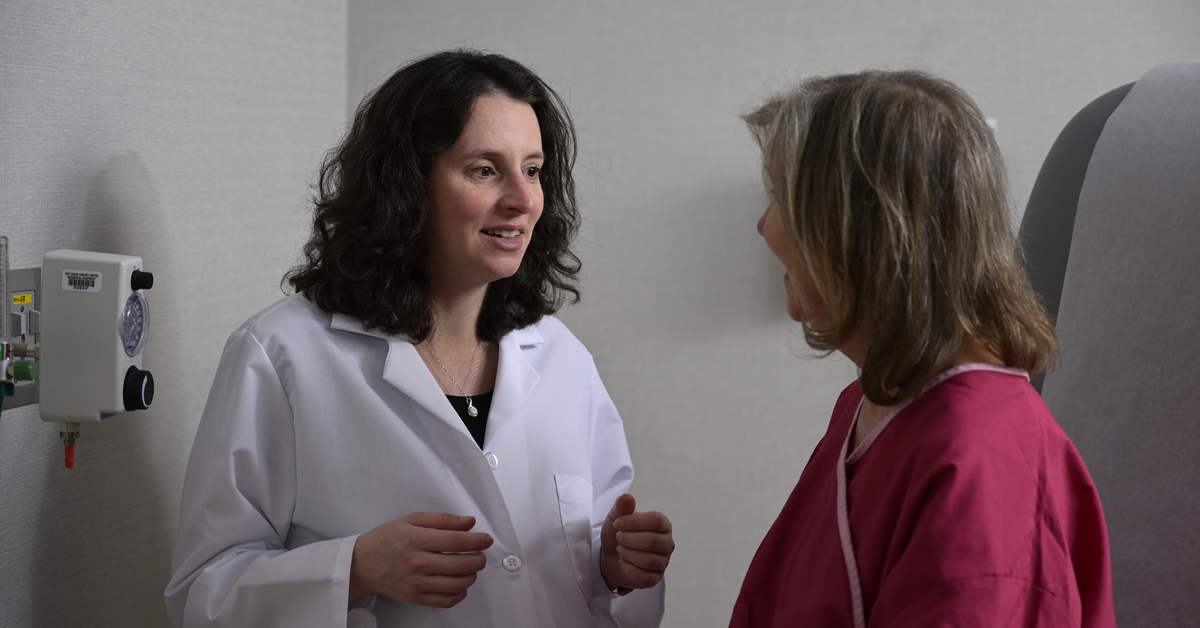
Important Considerations When You're Diagnosed with Melanoma
-
Any cancer diagnosis can be scary. But melanoma—a particularly serious kind of skin cancer—can be especially frightening.
Most people who have melanoma are diagnosed by their dermatologist. But once the biopsy results come back, next steps can be intimidating. Here’s what you should know:
Second opinions and surgical oncologists are important
Second opinions after a cancer diagnosis are always worthwhile.
“For early-stage melanoma, treatment usually consists of surgery—called a wide local excision—which is removal of the malignant mole or lesion along with surrounding normal skin in order to obtain negative margins. This is followed by close surveillance by your surgeon and dermatologist,” said Stephanie Greco, MD, a surgical oncologist at Fox Chase Cancer Center. “This standard-of-care treatment is unlikely to change from surgeon to surgeon. However, staging accuracy is critical to ensuring the appropriate frequency of follow-up and assessing the risk of recurrence. Our Fox Chase pathologists have special expertise in melanoma and review all outside biopsy slides as well as final surgical pathology to confirm staging is correct, as changes in staging can impact treatment plans.
Second opinions are especially important for people who are diagnosed with later-stage melanomas. In these circumstances, additional treatments beyond surgery may be required. Finding a cancer center that uses a multidisciplinary team approach is a good idea, as it includes specialists in many areas. This is the approach offered at Fox Chase.
“We have a multidisciplinary team that specializes in the treatment of melanoma and other skin cancers,” Greco said. “The surgeons work together with medical oncologists, radiation oncologists, pathologists, and radiologists. This team individualizes patient treatment plans. We also have access to novel therapies as well as many clinical trials specifically for melanoma patients.”
Treatment options for melanoma
The right treatment approach for melanoma is different for each person.
“Treatment for melanoma really depends on the pathologic features and the initial depth of the lesion, and that all depends on the original biopsy and pathology,” Greco said.
Treatment options for melanoma at Fox Chase include:
- Surgery may involve a sentinel lymph node biopsy. For this type of biopsy, which is only done by a surgical oncologist, the melanoma is removed along with the first regional lymph node to which the cancer is likely to spread.
- Immunotherapy, radiation therapy, targeted chemotherapy, and localized therapies, including intralesional injections—in which viral medication is injected directly into the site of the melanoma
- Isolated limb infusion—a minimally invasive procedure that delivers high doses of chemotherapy directly to a limb.
Melanoma prognosis
The outlook for people with melanoma has changed significantly in the last two decades. Early-stage melanoma is generally curable with surgical excision. When the disease is caught early, the five-year survival rate is close to 100%.
“Survival is much better than it was—even when it has spread—than it was 15 to 20 years ago,” Greco said. “There’s still potential for cure, even if you have advanced cancer.”
Preventing skin cancer
Melanoma is a curable cancer, but the best cancer is no cancer at all.
“Get your dermatological screening for skin cancer—that’s extremely important,” Greco said.
She recommends that people of average risk get a head-to-toe skin exam with a dermatologist once a year. Folks who are at increased risk for skin cancer or who get frequent sun exposure should get an exam more frequently. And everyone should use sunscreen and avoid tanning beds.
